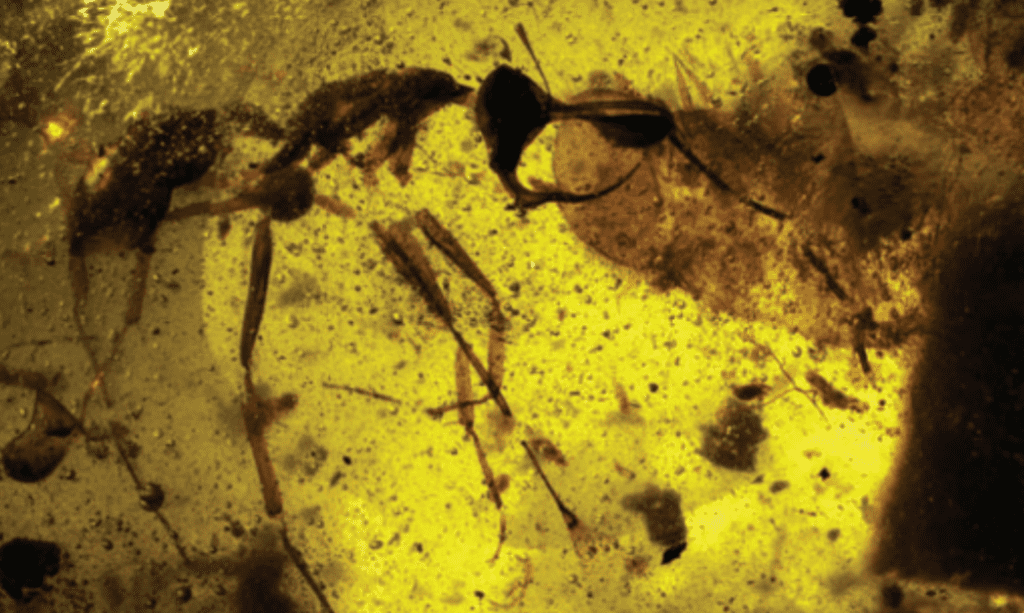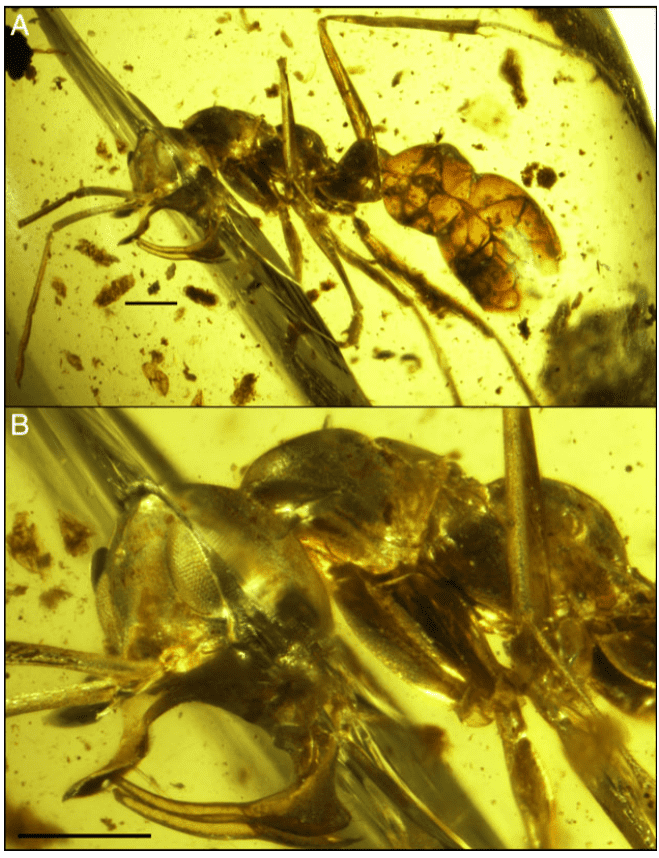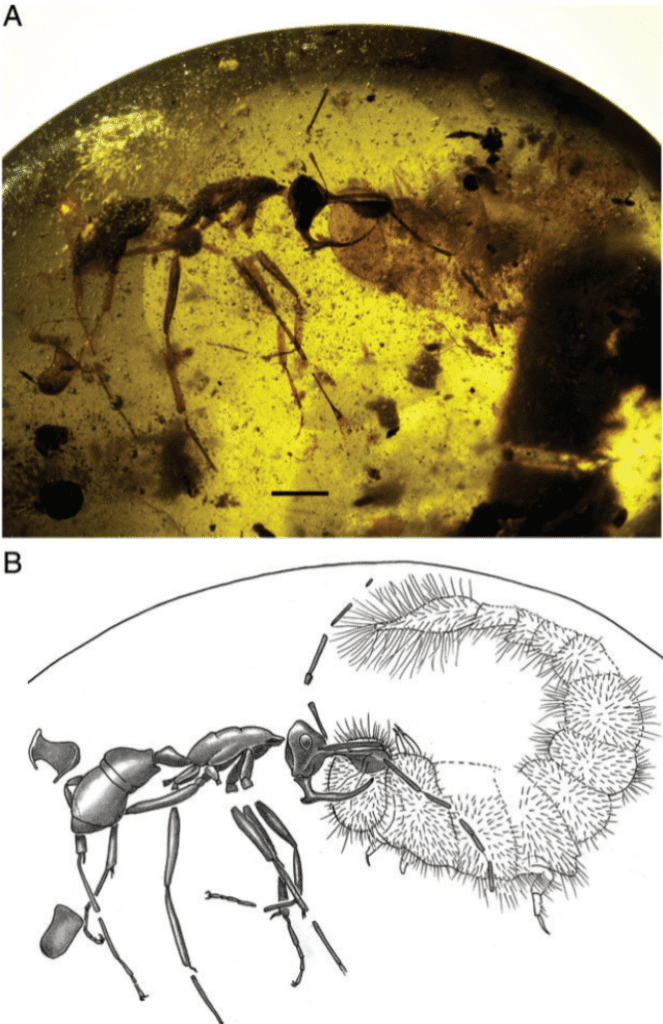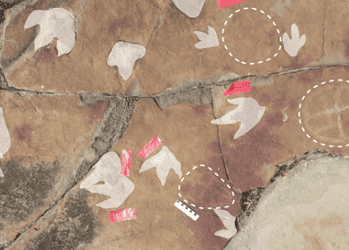A newly-described species of ant is so outlandishly frightful that it can only be called “hell ant.”

Brandishing upward-facing blades in lieu of regular mouth pieces, a metal-infused feeding horn, and the vampiric diet to go with the lot, Linguamyrmex vladi seems custom-tailored to star in every nightmare you’ll ever have. Fret not, however, for the species has been extinct — along with its extended lineage — since the Cretaceous.
The insect has just been described by a team from the New Jersey Institute of Technology in Newark led by Dr Phillip Barden. Nicknamed the “hell ant,” the insect was found preserved in 98-million-year-old amber and has a freakishly brutal anatomy.
The ant to rule them all
This insect is armed to the teeth — literally. The hell ant traded its mandibles for spike-like blades, which look pointy and unpleasant. This unique physiognomy, however, also posed a few issues for the team. It’s unlike anything living today, which made describing and understanding how Linguamyrmex vladi lived quite the challenge.
However, the team managed to find one feature which links them to modern species — short hairs around hell ants’ mouths. These are highly similar to those seen in trap-jaw ants (genus Odontomachus) which cause their jaws to snap shut when triggered. This led the team to suspect that the hell ants’ jaws functioned in a similar way, and helped them piece together the rest of its story.

Image credits P. Barden et al., 2017.
This is quite fortunate because that ‘rest of the story’ is pretty metal as well. L. vladi also had a deadly horn jutting out over its blade-like mandibles. Whenever some insect touched the hairs, the hell ant’s mandibles would contract, flipping its prey and punching the horn through its armored outer layers. The team describes a structure on the ant’s head that seems designed to absorb the force of the jaws:
“You have this sort of stopping plate, made to accommodate the mandibles closing and capturing prey,” says Barden.
In fact, based on CT scans performed on the ambered insect, the team says L. vladi’s clypeal paddle (the bit of its head where the jaws are set and elongates to form the horn) was covered in a layer reinforced with metal.
“This reinforcement occurs primarily along the centre of the paddle and, as the specimen is preserved with the mandibles largely ‘closed’ and positioned near this spot, suggests that the reinforcement is intended to accommodate mandibular impact,” they write.
Paper co-author Vincent Perrichot explains that the metal likely helped “keep the horn undamaged,” a method which some insects today still use to reduce wear and tear in areas that usually take a battering, adds Barden.

Not content with merely being the ant equivalent of an evil, metal-sheathed unicorn, L. vladi was also likely a vampire. When its mandibles moved upwards, the team reports, they formed a ‘gutter’ which was likely used to funnel haemolymph (bug blood) down the hell ant’s “mouthparts,” Barden explains. The team also found a beetle grub preserved alongside L. vladi in the amber, the kind of “squishy, haemolymph-laden insect” that could underpin its diet. Judging from its metal-tipped weaponry, however, it’s likely that L. vladi could easily penetrate the armor of adult insects as well.
“Until we find a specimen with the prey item trapped, which is probably a matter of time, we’re left to speculate,” says Barden.
The Myanmar, Burma, amber deposits where this ant was found are thankfully very rich, so we may find just what the team needs sometime soon.
The paper “A new genus of hell ants from the Cretaceous (Hymenoptera: Formicidae: Haidomyrmecini) with a novel head structure” has just been published in the journal Systematic Entomology.






